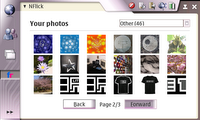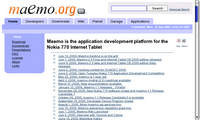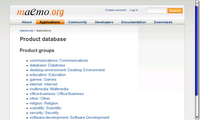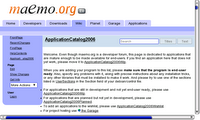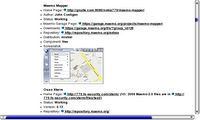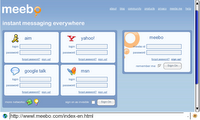Canola Meets Chaos
So Canola, the long awaited media center application for the Nokia 770 launched yesterday. There were some minor issues that were quickly fixed by the Canola development team. My installation of the application was met with disastrous results as I ended up having to re-flash the 770 because of an Application Manager error that was unresolvable by any other means. Needless to say, this did not make me happy, as all my saved passwords, and installed applications were reset in the process. After that, the installation went perfect.
This brings up some concerns I'm sure have been addressed before, but have yet to be resolved. First off, I don't fault Canola for any of the issues I ran into during the installation, because this problem has cropped up in other application installations through the Application Manager. The problem seems to lie with the Application Manager itself, and I fear that it may be the major obstacle in the path of the Internet Tablet's success. In order to install an application, you need to go through way too much hassle to do so. And when something goes wrong, it goes really wrong. The solution to issues also become even more non-trivial as time progresses.
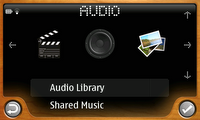

There needs to be an easier way to aggregate and install applications on the 770. Installed applications shouldn't be able to affect the installation of other applications, people shouldn't have to add repository information in order to get the program they desire, and the Application Manager should be stable enough to not require a reboot much less a re-flashing of the device. So enough with the nagging, let's get into how I feel about Canola.


This is an excellent application, and is easily the most well thought out I've seen on the 770 to date. Even the configuration interface just makes sense and works. The team has done a really great job with this amazing application. This single app has effectively replaced the default audio, video, and image applications while adding the functionality of the Media Streamer application. Finally, a single application for the 770 that has earned the "Complete Media Solution" award from me. This will definitely be an inspiration for future development of programs for the Maemo platform.




